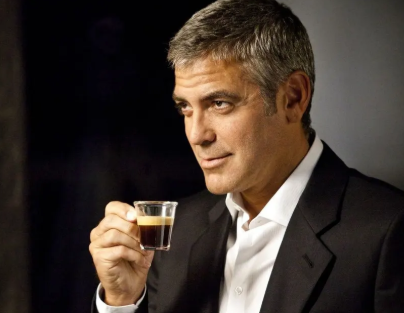The years that followed Clooney’s first ad were Nespresso’s happiest.
克魯尼首支廣告播出后的幾年是奈斯派索最開心的幾年。
In 2006, its revenues passed 500m pounds. By 2010 they had reached 3bn Swiss francs (2.5bn pounds),
2006年,其收入超過5億英鎊。到2010年,他們的收入達(dá)到了30億瑞士法郎(25億英鎊)。
and the capsule market was growing five times faster than the overall coffee market.
膠囊咖啡市場(chǎng)的增長速度是整體咖啡市場(chǎng)的五倍。
In Switzerland, Nespresso took business from roast and ground; in China, from tea; in Britain, from instant.
在瑞士,奈斯派索靠烘培和研磨咖啡獲利,在中國靠茶品獲利;在英國則靠速溶咖啡獲利。
Nespresso reigned supreme over an entire domain of coffee that it had effectively created from scratch.
奈斯派索的膠囊咖啡機(jī)在它從零開始創(chuàng)造的整個(gè)咖啡產(chǎn)業(yè)中獨(dú)占鰲頭。
As Nespresso kept growing, its pursuit of global homogeneity rubbed up against idiosyncratic national or regional coffee cultures.
隨著奈斯派索不斷擴(kuò)張,它追求全球同質(zhì)性和國家或本土咖啡文化的特質(zhì)性出現(xiàn)沖突。
“If you are somewhere it is hot all the time, and you’ve just had a spicy meal,
“如果你在一個(gè)一直都很熱的地方,你剛剛吃了一頓很辣的飯,
you don’t want a coffee that lasts very long, so you have a shot,” said Karsten Ranitzsch, Nespresso’s head of coffee,
你不想喝太久的咖啡,所以你可以來一杯嘗嘗,”奈斯派索咖啡公司的咖啡總監(jiān)卡斯滕·拉妮斯說道。
as we stood beneath a row of enormous silos in a state-of-the-art production centre in the Swiss municipality of Romont.
當(dāng)時(shí)我們位于瑞士羅蒙市的一個(gè)最先進(jìn)的生產(chǎn)中心,站在一排巨大的筒倉下。
“But in Scandinavia it has another function: to warm you up.”
但在斯堪的納維亞半島,它還有另一個(gè)功能:讓你暖和起來。”
The company’s market research suggests that sometimes consumers do not know what they actually want.
該公司的市場(chǎng)調(diào)查顯示,有時(shí)消費(fèi)者并不知道他們真正想要的是什么。
Culturally, Germans like to believe they like strong coffees, but if you give them a blind taste test,
文化上,德國人喜歡相信他們喜歡濃咖啡,但如果你給他們一個(gè)盲品測(cè)試,
they prefer milder drinks, and often buy the coffee that isn’t the one they prefer.
他們喜歡喝更淡的咖啡,經(jīng)常買自己不喜歡的咖啡。

Nespresso’s factories are gleaming temples to globalisation.
奈斯派索的工廠是全球化進(jìn)程中閃閃發(fā)光的神殿。
Beans are shipped “green” from all over the world to the facilities in Romont, Orbe and Avenches.
“原生態(tài)”的咖啡豆從世界各地被運(yùn)到位于羅蒙,奧爾布和阿旺什的工廠。
The beans are roasted, ground and put into capsules, between 5 and 6 grams of coffee and 1 gram of aluminium per capsule.
這些咖啡豆經(jīng)過烘培、研磨后被放進(jìn)膠囊中,每粒膠囊含有5至6克咖啡和1克鋁。
On its long journey to the back of your throat, Nespresso coffee is checked for quality more than 40 times,
在它到達(dá)你喉嚨后部的漫長旅途前,奈斯派索咖啡的質(zhì)量
using colour spectrometers and a battery of tasters in white coats.
會(huì)通過彩色分光計(jì)和一組身著白大褂的品嘗師檢查四十多次。
In some cases, there is DNA analysis. Ranitzsch told me that many of the tasters are trained in France,
在一些情況下,還會(huì)做DNA分析。拉妮斯告訴我,很多品嘗師都是在法國接受的培訓(xùn),
a nation where “palate” is taken seriously as a qualification.
而法國正是一個(gè)認(rèn)真對(duì)待“味覺”的國家。
After the capsules have been packaged, they are sorted by robots and sent by train to Antwerp.
咖啡膠囊包裝完成后,由機(jī)器人進(jìn)行分類,然后經(jīng)火車運(yùn)到安特衛(wèi)普市。
From there, they are shipped to countries all over the world.
從那里,它們被運(yùn)往世界各地。


